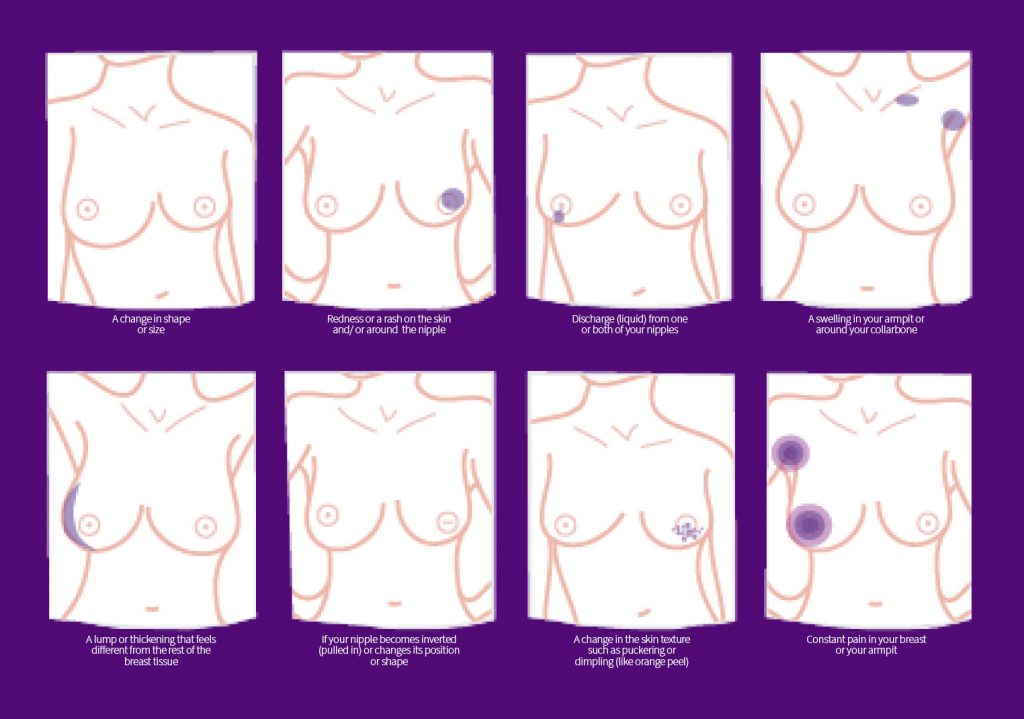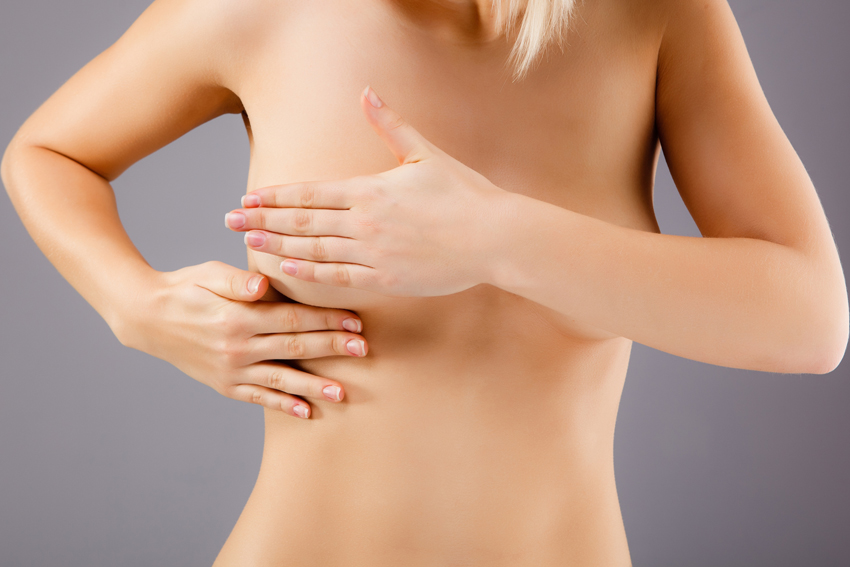It’s important to know…
Breasts come in all shapes and sizes and will change throughout your life. Your menstrual cycle, pregnancy, age and weight may alter the size, shape and feel of your breasts. That’s why it’s important for you to become familiar with your breasts and check them regularly so that you know what’s normal and can report any changes to your GP. More than half of breast cancers in women are detected by women themselves and early detection of breast cancer can improve your chance of successful treatment.
Breast awareness at a glance
- Find time to check your breasts regularly.
- Look at your breasts in the mirror at the size and shape.
- Feel your breasts in the bath or shower, lying down or when getting dressed.
- If you notice any changes, see your doctor immediately.
- If you’re over 40, have a free screening mammogram every two years.
How to check your breasts
IN THE SHOWER

Put your left hand behind your head and using the pads of your right fingers, move around your entire breast in a circular pattern moving from the outside to the centre, checking the entire breast and armpit area for anything unusual. Then do this for your right side.
IN FRONT OF THE MIRROR

Visually inspect your breasts with your arms at your sides. Next, raise your arms high overhead. Look for any changes. Next, rest your palms on your hips and press firmly to flex your chest muscles. Left and right breasts will not exactly match – few women’s breasts do, so look for any changes, particularly on one side.
LYING DOWN

When lying down, the breast tissue spreads out evenly along the chest wall. Place a pillow under your right shoulder and your right arm behind your head. Using your left hand, move the pads of your fingers around your right breast gently in small circular motions covering the entire breast area and armpit. Use light, medium and firm pressure. Squeeze the nipple; check for discharge and lumps. Repeat these steps for your left breast.
Download a breast check card to print or share with a friend or loved one.
Breast changes
Most breast changes are not due to breast cancer, however, if any of these symptoms are experienced it is important that they are discussed with your doctor.
- A lump, lumpiness or thickening in the breast tissue or armpit.
- Skin changes such as dimpling, puckering or redness.
- Nipple changes such as an unusual discharge, the nipple pointing in rather than out (unless it has always been this way) or an itchy/ulcerated area.
- A part of the breast that feels different from the rest of the breast.
- A new and persistent pain.
- A change in the shape or size of the breast.
SIGNS & SYMPTOMS

Breast cancer screening
Self-examination is not a substitute for regular mammogram screening. A mammogram is an x-ray of the breast and can save your life. It is important for all women aged 40 and over to have a free screening mammogram every two years. Mammograms can detect a lump as small as a grain of rice and up to 90% of breast cancers.
BreastScreen WA offers free screening mammograms to anyone aged 40 and over. Clinics are available in locations around the Perth metropolitan area. For women living in rural and remote areas the BreastScreen WA mobile unit visits regional towns every two years. To make an appointment for a free mammogram call BreastScreen WA on 13 20 50
Once you turn 75, you will no longer be sent a letter reminding you to attend for your two-yearly breast screen, however it is still encouraged.
Breast cancer screening for younger women
There is no evidence that regular screening by mammography for women under 40 is beneficial, but all women should be breast aware and see their doctor without delay if any changes are noticed.
Whilst women aged from 50 to 74 are the target group for regular mammograms, women aged 40–49 years are also eligible for free two-yearly screening mammograms through the BreastScreen Australia Program.
Mammographic screening is not recommended for women younger than 40 years of age as their breast tissue is too dense to detect breast changes accurately using this method. If a woman in this age group is concerned about breast changes, a doctor may still recommend a mammogram but will probably also arrange an Ultrasound. A referral to a medical imaging service is needed for this. A GP can provide this referral.
See your GP to discuss high risk clinics, familiar cancer clinics and genetic services. Some women under 50 may be eligible for MRI.
Email us
Request a Call Back

